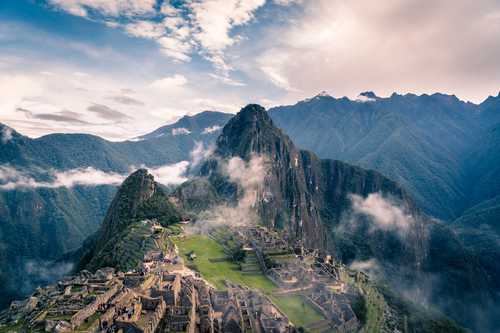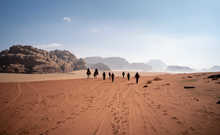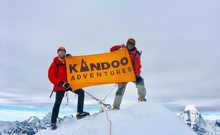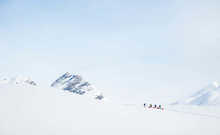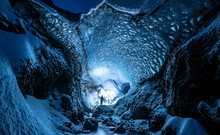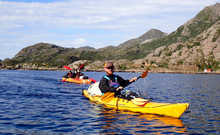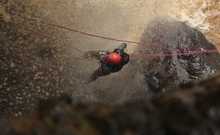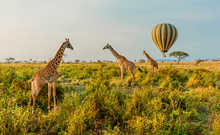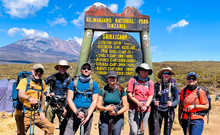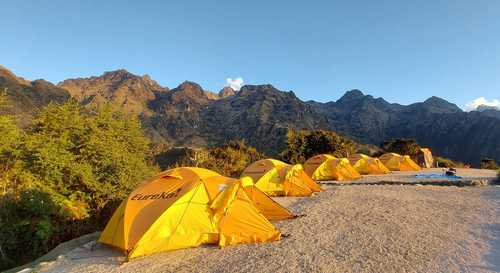
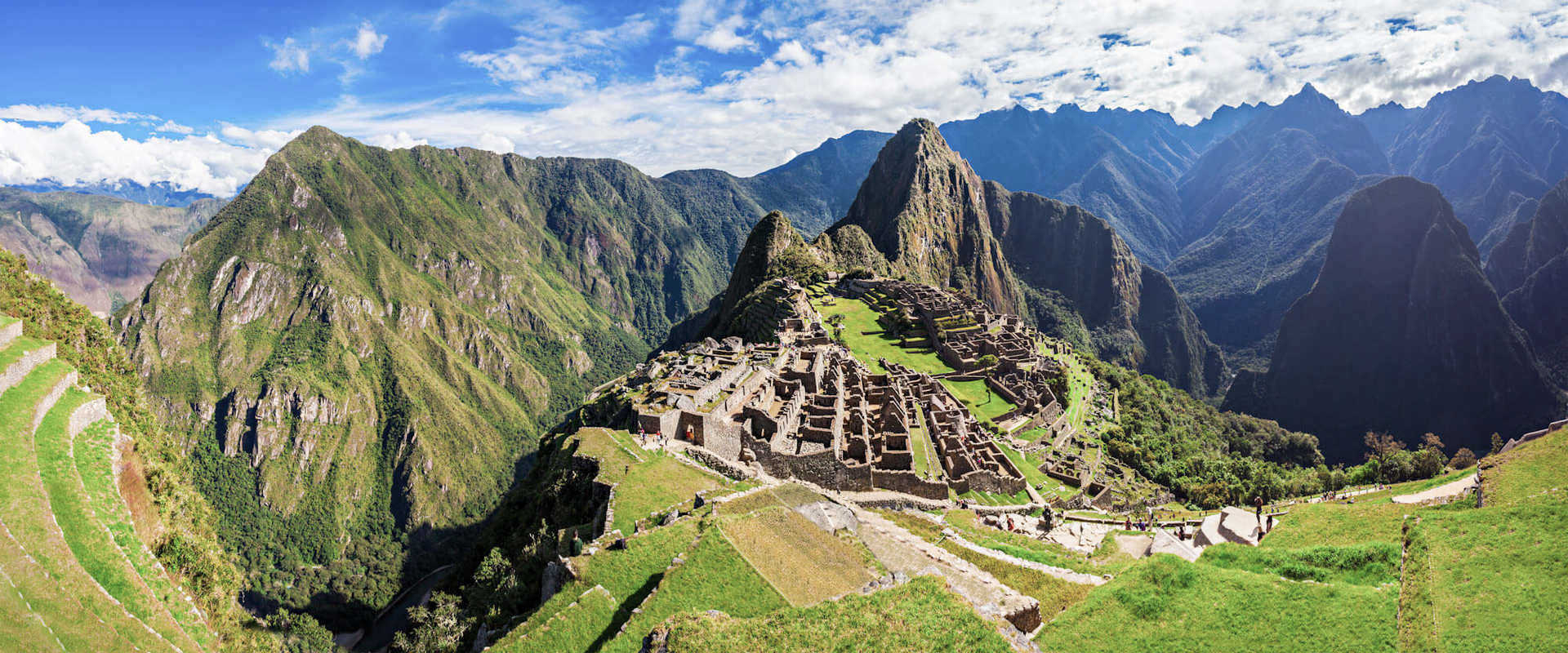
Machu Picchu Travel Guide
Machu Picchu FAQs
-
How difficult is it to hike to Machu Picchu?
The treks we operate range in difficulty from moderately challenging to very challenging. The short Inca Trail is a one day trek with a tour of the ruins on the second day and is a very easy option. The full Inca Trail is one of the easier treks we operate, and it is only when you look at the longer treks like Vilcabamba trek that they become more challenging. You can find out more about how difficult the Inca Trail is in our blog. -
When are the best times to hike to Machu Picchu?
The most popular time periods for a Machu Picchu trek are May to September due to a lack of rain. From October to December, it is most likely to be rainy and from January to February, conditions are extremely wet, so much so that trails are closed until March.We recommend trekking between May and September where chances of rain are lower. However, better conditions mean bigger crowds, especially in the Citadel, and even on the Inca Trail. To help you decide when the best time is to visit Machu Picchu, read our article.
-
What kit do I need for the trek?
You will not get big changes in temperature on a Machu Picchu trek so you will need fewer clothes that other high altitude treks. A pair of walking shorts or trousers, a t-shirt and a thin fleece are fine for the day with a change into trousers and a thicker fleece or jacket for the evening. These can also be used if the daytime temperatures do get colder too.A waterproof hard outer shell is a good idea if you are doing your Machu Picchu hike during the shoulder months. We recommend using a plastic poncho. Even when it rains the humidity is high and Gore-Tex will not let your body breath fast enough to get rid of sweat - you then get wet from the inside. There is a full list of recommended clothing and equipment in your trip dossier or you can read what to wear to Machu Picchu here.
-
What is the difference between an open group climb and a private climb?
Private treks to Machu Picchu are your own personal adventure. They give you total flexibility to tailor-make your trip. Just choose your date, route and any of our bespoke trip options. A private trek is ideal for a group of friends, a charity group or a couple looking to celebrate a special birthday or anniversary. Upgrades to private climbs start from £100 per person depending on the size of the group.If you prefer the company of others while you trek to Machu Picchu, then an open group is ideal. Group trips to Machu Picchu are great for solo travellers, couples or groups of friends, offering the opportunity to explore the Andes with like-minded travellers.
We have a schedule of open group treks every week during the trekking season from March through January. They are limited to a maximum of 12 climbers to make sure you get the best support on your trek.
-
Do you organise charity treks to Machu Picchu?
Yes, we can organise Machu Picchu charity treks for fundraisers and for anyone looking to raise money for your favourite charity. We do not organise treks where the cost of the trip is funded by donations. Our charity challenges information page has more information about how we can support your charity trek. -
Can I climb Huayna Picchu?
Absolutely, yes! It looks impossible when you see a picture, but Incan path builders have built a series of steep staircases up the mountain. You will need to use your hands for balance, but it requires no technical climbing skills to climb Huayna Picchu.You do though need a separate permit, and these are in high demand. They must be booked at the same time as you book your trek to guarantee your place as a Huayna Picchu climber.
You can find out more about what to expect from your Huayna Picchu trek here.
-
How do I get to Machu Picchu?
Machu Picchu is not the easiest place to reach as there are no direct flights. Most routes either take you via Lima, the capital of Peru, or via Bogota. It is important to note that strong winds also affect flights into Cusco, the nearest city to Machu Picchu, especially in the afternoons.From Europe, often the best flights are with KLM via Amsterdam. From the US, there is a wider choice of options including American Airlines and United Airlines.You can find further information about how to reach Cusco in your trip dossier. -
What will the food be like on the trek?
The food that our cooks provide on our Machu Picchu treks is amazing. If you have special dietary requirements, we can handle most needs so long as you let us know well in advance. You will find more information about what to expect in terms of eating and drinking in your trip dossier. -
What are the tents you use like?
On all our treks we use comfortable three person mountain tents. They are extremely strong, and with only two people in them you have plenty of room. Our mess tents are tall, strong and comfortable allowing plenty of space for large chairs which you can rest and recuperate in after a long day walking. For more information about camping on the Inca Trail, check out our blog. -
What are the toilets like?
On all our treks to Machu Picchu we provide a private toilet tent. This is a plastic toilet seat with a bucket underneath. Absolutely everything we use on our trips has to be carried out, so you do your business into a plastic bag which sits inside the bucket. The bag contains crystals to dehydrate everything. Our team then take care of the rest. It is important that our trips to Machu Picchu leave as little impact as possible and we stick stringently to our Leave No Trace principles.For those trekking the Inca Trail, there are several public toilets on route on day one of the trek, but very few after that. You also need to pay to use the public toilets, so make sure you have some change on you if you want to use these. Public toilets are all stand up and squat type. Generally, there is no need to use these as we will set up a private toilet for use by our group. -
How will I wash during the trek?
Every morning and evening you will be provided with a bowl of hot water for washing. As well as this we strongly recommend that you bring a good supply of baby wipes or reusable wipes and hand sanitiser for cleaning your hands during the day. Remember that everything, including rubbish and used wipes, has to be carried out afterwards so we recommend trying to create as little waste as possible. -
Will I be able to get mobile signal while trekking to Machu Picchu?
Trails to Machu Picchu are remote and, in many areas, you will be surrounded by mountains. There is, therefore, very rarely any mobile reception on the trails themselves. Once you reach Aguas Calientes, you should be able to get a mobile signal. You can also get Wi-Fi at some hotels and restaurants in the city. -
How much should I expect to pay for tips?
Tips are not a substitute for good wages. Kandoo pay our crew some of the highest wages of any operator because we believe our team is the best in the business. Tips are customary in Peru, and we recommend tipping your guide, cook and your porters. There are however, discretionary and if you are not happy with the service you have received, then you do not have to tip.We recommend tipping as a group and budgeting around $100 per person which will be divided between your support crew. We’ll normally email you shortly before your trip with a suggested amount dependant on the number of people in your trekking group, but this is given entirely at your discretion. -
What do you do for the local community?
Working with the local community is one of our priorities in all destinations we visit. We work hard to give something back to each area we operate in. You can read about our sustainability here.We offset all our trip carbon emissions through various initiatives local to us and the destinations we visit. In Peru, one of the forest carbon schemes we support sits on the edge of the Amazon rainforest and helps indigenous people to sustainably manage the land in a way that increases biodiversity and social responsibility. Read more about our forest carbon initiatives here. -
Do I need any vaccinations for Machu Picchu?
The standard vaccinations required for Peru are diphtheria, tetanus, typhoid and hepatitis A, but you should always consult your doctor or travel clinic for the most up to date advice. Yellow Fever is recommended for some areas of Peru, which includes the Amazon basin. -
What insurance do I need for my trek?
You must have proper insurance for your Machu Picchu trek. This must cover you up to an altitude of 4,700m, and should specifically include the costs of emergency evacuation in case this is necessary. We’d recommend bringing a copy of your insurance details with you in case of emergencies, as well as the emergency contact information for your provider. It is your responsibility to ensure you have adequate cover for your trek as part of our terms and conditions. -
What is the history of Machu Picchu?
Machu Picchu is known as ‘The Lost City of the Incas'. It is located in the saddle of a mountain ridge, more than 2,400 metres above sea level. It overlooks the Urubamba Valley and is less than 80 kilometres from the ancient Incan capital of Cusco. It is believed that Machu Picchu was constructed in the early 1400s as a palace and temple complex for an emperor. Its ruins are very well preserved, and an excellent example of the ‘classic Incan style’ of architecture. Read our article, a brief history of Machu Picchu, to learn more about this intriguing wonder. -
How was Machu Picchu constructed?
Machu Picchu built with polished dry-stone walls and thatched roofs. Incan stonework used huge blocks of stone carefully ground and shaped to fit together. These were combined in perfect complex patterns without mortar. The fact that they are still standing in this earthquake-prone region shows how well they were built. The stone used for Machu Picchu was quarried from the site itself. Chippings from the large stones went to form the terraces and courtyards allowing them to drain off the heavy rainfall they receive without too much erosion. -
What are some of Machu Picchu’s most important sites?
The site has two primary components: the agricultural sector and the urban sector. The urban areas are further divided into the upper town or temple district, and the warehouses of the lower town. Machu Picchu has around 200 buildings constructed in wide terraces, centred on a large public square.To the west of this square is a tower called the Torreón, which was very likely an astronomical observatory (without a telescope, of course). Also of interest are the Temple of the Sun, the Room of the Three Windows, and the Inti Watana stone. These were all central to the worship of the chief Inca god, Inti, who was associated with the sun. The Inti Watana, sometimes called ‘the hitching-post of the sun’, is a stone set up to mark the position of the sun at the shortest day of the year, the winter solstice. Note that the explorer who stumbled upon Machu Picchu, Bingham, named it such, based on his limited understanding of its religious significance and his desire to make for compelling publication. Modern researchers believe the stone is more likely a calendar, much like Britain’s Stonehenge. The Inti Mach’ay is an actual site associated with the worship of Inti at Machu Picchu.It is a carefully constructed artificial cave designed to only receive light for a few days around the winter solstice, when the Royal Feast of the Sun was celebrated. Young nobles would be initiated into manhood by having their ears pierced as the sun rose upon them in the cave. -
When was Machu Picchu discovered?
There is some evidence that Europeans may have found Machu Picchu’s existence in the mid to late 19th century. The most famous discovery was by an American named Hiram Bingham in 1911. He publicised it widely and explored the ruins in detail. -
What is the future of Machu Picchu?
Machu Picchu is Peru's biggest visitor attraction, and they are working hard to protect it. At the same time, they need visitors to fund conservation. As of 2025 the government have made changes to the way you can visit Machu Picchu. Time slots are now in force, and you must stick to a prebooked route around the city. This helps to regulate the flow of foot traffic whilst ensuring everyone can still access this important archaeological site. To ensure Machu Picchu is preserved and conserved for future generations, we must support these changes and follow the proper rules for conducting ourselves during our visit. You can read more about the etiquette to follow at Machu Picchu in our blog to help lessen the toll high visitor numbers have on this fascinating UNESCO World Heritage Site.
Our blog

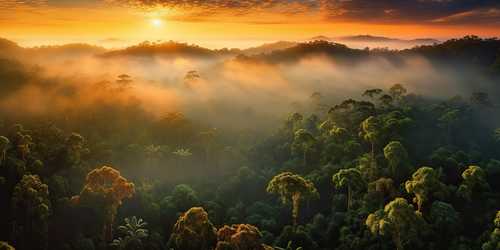
Best time to visit Machu Picchu
